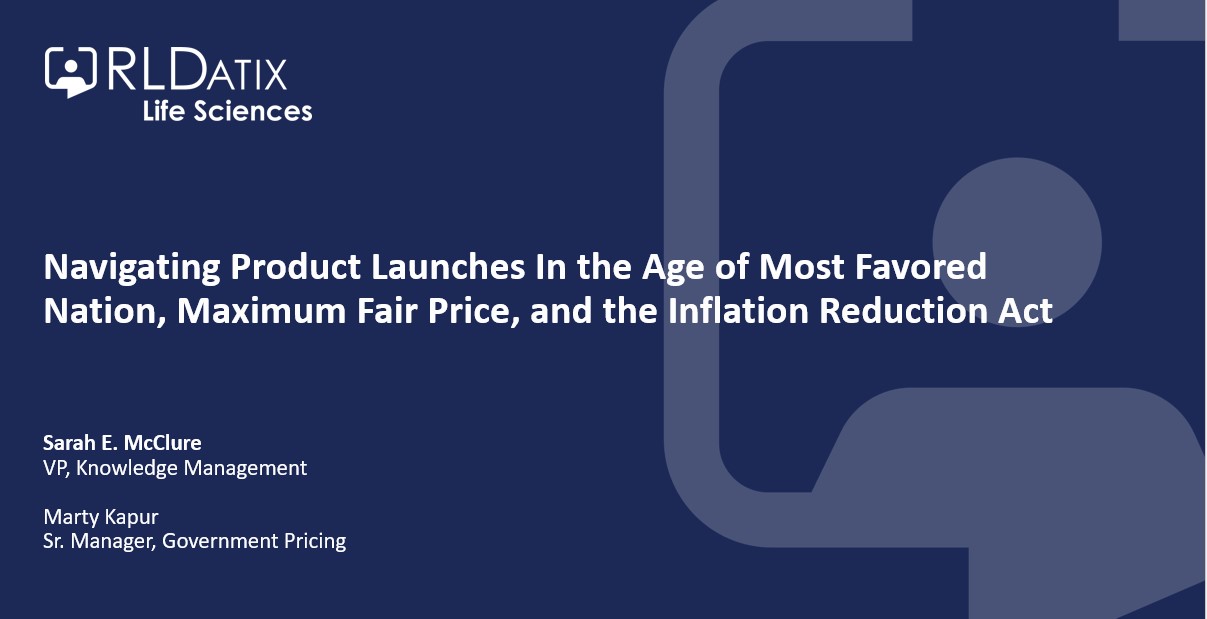Launching a drug in today’s market is all about navigating the right path. With Most Favored Nation (MFN) policies under discussion, Maximum Fair Price (MFP) requirements taking shape, and Inflation Reduction Act (IRA) provisions already impacting revenue models, pharmaceutical manufacturers face a gauntlet of regulatory checkpoints before, during, and after launch.

So, how do you build a launch strategy that holds up under that kind of pressure?
Here’s a look at some of the challenges manufacturers need to prepare for and the strategic decisions that can make or break a launch.
Don’t Let Pre-Launch Be a Blind Spot
Pre-launch planning today is less an operational formality and more a regulatory necessity. The RLDatix team recommends conducting a detailed government liability assessment and price modeling exercise well ahead of launch. This includes evaluating your product’s AMP baseline, reviewing WAC price scenarios, and understanding how each variable might trigger downstream rebate obligations under Medicaid or the IRA.
It’s also critical to coordinate NDC configuration, CMS and FDA alignment, and commercialization strategy across legal, finance, compliance, and pricing teams. One misstep (like a misaligned unit of measure or a missed AMP request) can cascade into major reporting issues.
Price Transparency Is Not Optional
New product reporting windows are becoming increasingly stringent, with some states requiring notification within 3–10 days of launch. At the same time, manufacturers must register in state portals, gather key product details, and prepare for publication well in advance. RLDatix recommends building a 90–120 day runway for price transparency planning.
Maximum Fair Price: Know Where You Stand
The Inflation Reduction Act (IRA) introduced the Maximum Fair Price (MFP) program for high-spend Medicare drugs, and its implementation is reshaping contracting and pricing strategies across the board. If your product is among the first 10 drugs selected for negotiation — or may be included in future cycles — it’s essential to monitor CMS guidance and align your pricing systems accordingly.
It is important to prepare operationally: from updating internal pricing models to ensuring MFP is applied at the point of sale for Medicare beneficiaries. The catch? MFP ceilings can impact Medicaid Best Price calculations, so manufacturers must exercise caution to avoid cross-program conflicts. This is where strategic modeling and airtight documentation become critical.
Most Favored Nation: Prepare for Global Benchmarking
Most Favored Nation (MFN) pricing may not be fully implemented, but its influence is already being felt. Policymakers are exploring international price benchmarking and importation models that could help align drug prices with those in the lowest OECD countries. In response, manufacturers should assess how MFN targets could impact their Medicare, Medicaid, and commercial strategies.
There are also operational implications to consider: MFN-style pricing may favor direct-to-consumer models or require supply chain overhauls to facilitate new distribution channels. And while litigation and legal uncertainty remain, RLDatix advises proactively modeling MFN exposure and building internal playbooks to respond quickly to rule changes.
IRA Rebates: Inflation Isn’t Just a Macro Trend
Under the IRA, drug price increases that outpace inflation now trigger rebate obligations, regardless of whether your product is brand-new or already on the market. The RLDatix team emphasizes the importance of forecasting inflation exposure, integrating rebate accruals into GTN models, and upgrading infrastructure to track and report accurately.
Pricing committees must now weigh the long-term financial impact of every WAC adjustment. Future-proofing your launch means embedding inflation analytics and rebate planning into your commercialization strategy from day one.
Want the Full Playbook?
These challenges of launching a new product aren’t going away, and they aren’t getting simpler.
In a recent RLDatix Life Sciences webinar, Sarah McClure (VP, Knowledge Management) and Marty Kapur (Director, Government Pricing) walked through the realities of commercialization in 2025 and what it now takes to plan, price, and scale with confidence.
Watch the full webinar, “Navigating Product Launches in the Age of Most Favored Nation, Maximum Fair Price, and the Inflation Reduction Act, ” and walk away with practical strategies, key watchouts, and best practices from the experts.
